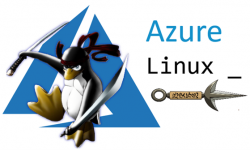If you are experiencing a no-boot scenario, for example due to a corrupt kernel and do not have access to GRUB via the Azure Serial Console, the next best option could be to use Linux Recovery Scripts which are available in both: Power Shell Recovery Scripts Bash Recovery Scripts Watch this video to understand how to recover a Red Hat Linux which has kernel problems but no GRUB access. The OS disks in this demo […]
Monitor Linux utilization with sysstat
Sysstat is a very interesting option to enable system monitoring without sacrificing performance and disk storage. Some distributions have it installed but disabled by default, other distributions you have to install it manually. With the steps provided in this article you can get sysstat up and running so you can have history data to analyze if you run into any performance issues. Installing Sysstat Debian/Ubuntu sudo apt-get install sysstat Redhat/CentOS/Oraclesudo yum install sysstat Enabling stat collection […]
How to transfer data to or from a Linux VM in Azure?

There are various options to transfer data into a Linux VM, if you have ssh enabled then WinSCP / SCP client tools will work seamlessly even if you choose to use ssh keys instead of password logins, however you may need to transfer files between VMs and again you can use scp or configure vsftpd Transfer data from Local PC to Linux VM To configure WinScp, go to Advanced, SSH, Authentication and select the private […]
Linux Recovery: Cannot SSH to Linux VM due to FSTAB errors.

Problem: There are a few cases where a VM might stop booting up properly if the syntax in /etc/fstab is incorrect or if a data disk is missing (not attached to the VM) as well as other reasons. Traditionally in Linux you can mount a scsi device by using the following format in fstab: /dev/sdc1 /data ext4 defaults 0 0 However in cloud environments there is no way to guarantee the same scsi ID every […]
Azure CLI: How to delete and re-deploy a VM from VHD
NOTE: Recently the azure cli has changed to the az cli, unless you have the older azure cli tools still installed, you should visit the new and updated post with instructions for the az cli here. Unless you are still using the old azure cli tool, the instructions bellow will not work in the new az cli. Before moving further, please, make sure you have the Azure CLI tools installed:Install the Azure CLI For the […]
Azure PowerShell: How to delete and re-deploy a VM from VHD
Before moving further, please make sure you have Azure PowerShell installed:How to install and configure Azure PowerShell For basic information about using Azure Powershell with Resource Manager (ARM), please have a look at:Using Azure PowerShell with Azure Resource Manager In this example, the following variables are being used: Resource Group: ARMGROUPOriginal VM Name: LinuxVMLocation: southcentralusNIC Name: LinuxVM-NICStorage Account: ARMSTORAGEVHD URI: https://ARMSTORAGE.blob.core.windows.net/vhds/linuxvm.vhd You should be able to get a list of parameters from a given VM […]
Linux Recovery: Using CHROOT steps to recover VMs that are not accessible
You are facing an issue where you might need to basically delete a virtual machine (VM) , keep its OSDisk and attach it to another Linux VM where you can then repair whatever is wrong on that old VM, however in some instances you would also be able to have network access and some way of updating let’s say packages, adding a user account or doing any task that you can do on a normal […]
Linux Recovery: Fixing non-boot issues related to Kernel problems using chroot
In a previous article, it was described how to manually fix kernel related issues that could cause a Linux VM to not boot properly. There is also an option where you can use steps to use CHROOT and then use tools to automatically fix these same issues without the need to manually edit files. Assuming you have your system ready after going to the steps described in this article, meaning you just went through the […]
Azure Linux Extensions: Custom Script for Linux
You have probably seen some extensions that are available on Azure, some of them listed/documented here: Azure Linux Extensions In this article, we will cover a few examples that you can use with the “Custom Script for Linux” extension. This extension basically allows you to run a script inside a Linux VM, so as long as the Linux Agent (WAAGENT) is working correctly you should be able to use this extension without problems. You can […]
How to: Resize Linux osDisk partition on Azure
Most Linux images on Azure will by default have 30GB size for the osDisk and that is something that you might want to resize moving forward. NOTE: We recommend to store applications and data on a separate data disk not only because of space but also for performance reasons. Resizing the partition is really simple on Azure and we can be done by the following procedure: a) Stopping and deallocating the VM on the portal […]
Recent Comments